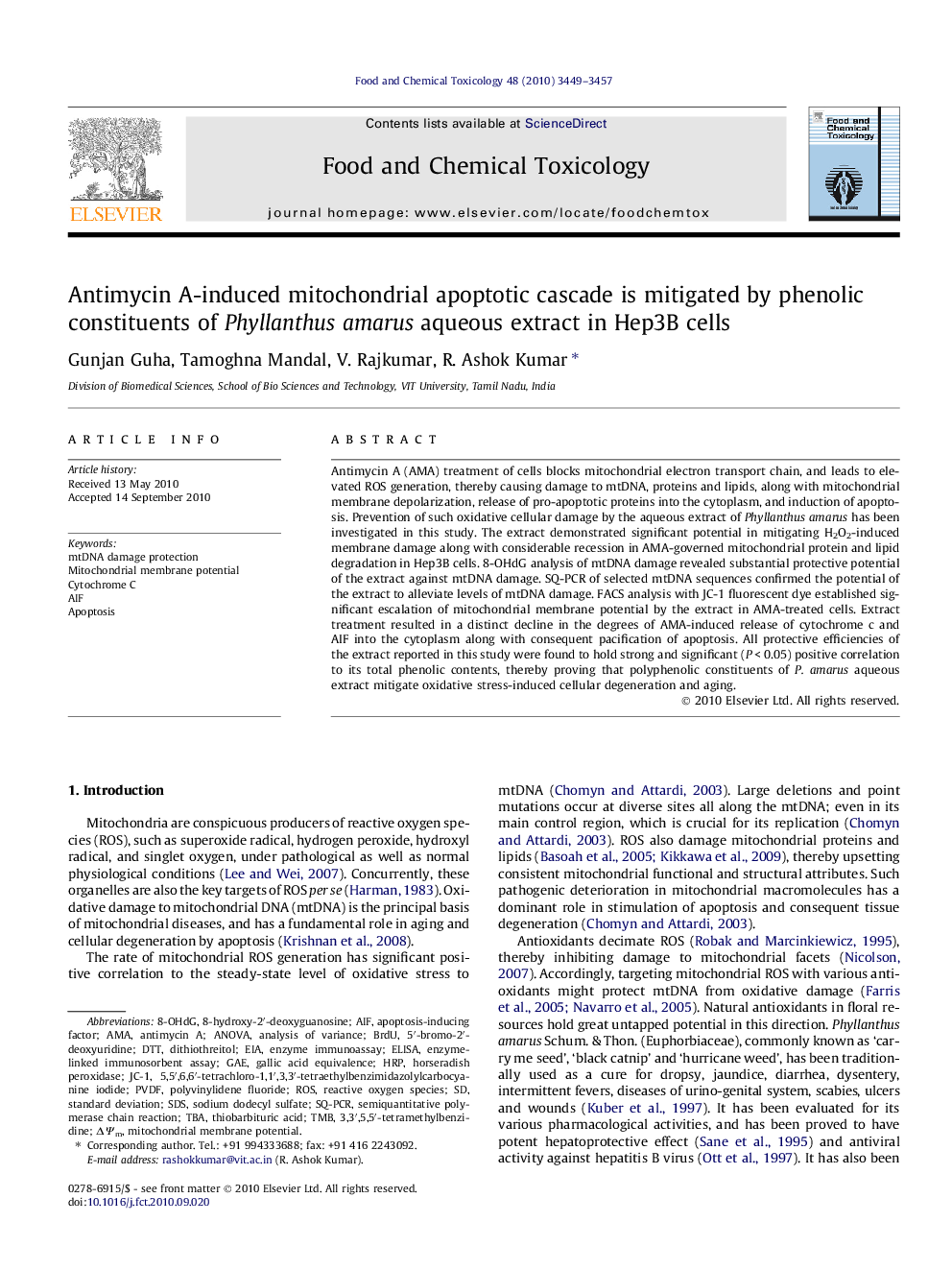| Article ID | Journal | Published Year | Pages | File Type |
|---|---|---|---|---|
| 2585472 | Food and Chemical Toxicology | 2010 | 9 Pages |
Antimycin A (AMA) treatment of cells blocks mitochondrial electron transport chain, and leads to elevated ROS generation, thereby causing damage to mtDNA, proteins and lipids, along with mitochondrial membrane depolarization, release of pro-apoptotic proteins into the cytoplasm, and induction of apoptosis. Prevention of such oxidative cellular damage by the aqueous extract of Phyllanthus amarus has been investigated in this study. The extract demonstrated significant potential in mitigating H2O2-induced membrane damage along with considerable recession in AMA-governed mitochondrial protein and lipid degradation in Hep3B cells. 8-OHdG analysis of mtDNA damage revealed substantial protective potential of the extract against mtDNA damage. SQ-PCR of selected mtDNA sequences confirmed the potential of the extract to alleviate levels of mtDNA damage. FACS analysis with JC-1 fluorescent dye established significant escalation of mitochondrial membrane potential by the extract in AMA-treated cells. Extract treatment resulted in a distinct decline in the degrees of AMA-induced release of cytochrome c and AIF into the cytoplasm along with consequent pacification of apoptosis. All protective efficiencies of the extract reported in this study were found to hold strong and significant (P < 0.05) positive correlation to its total phenolic contents, thereby proving that polyphenolic constituents of P. amarus aqueous extract mitigate oxidative stress-induced cellular degeneration and aging.
